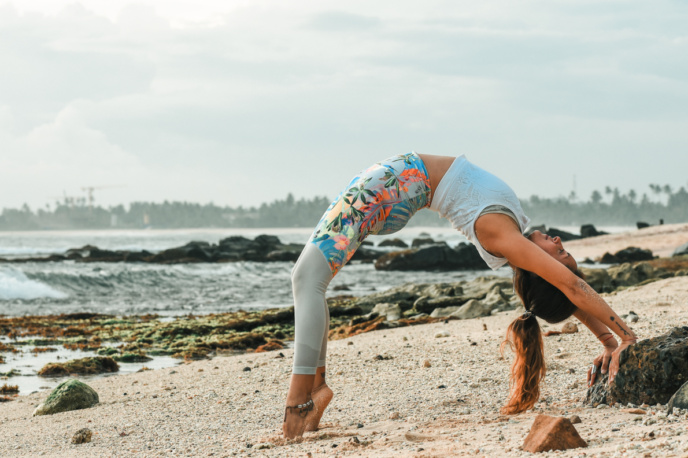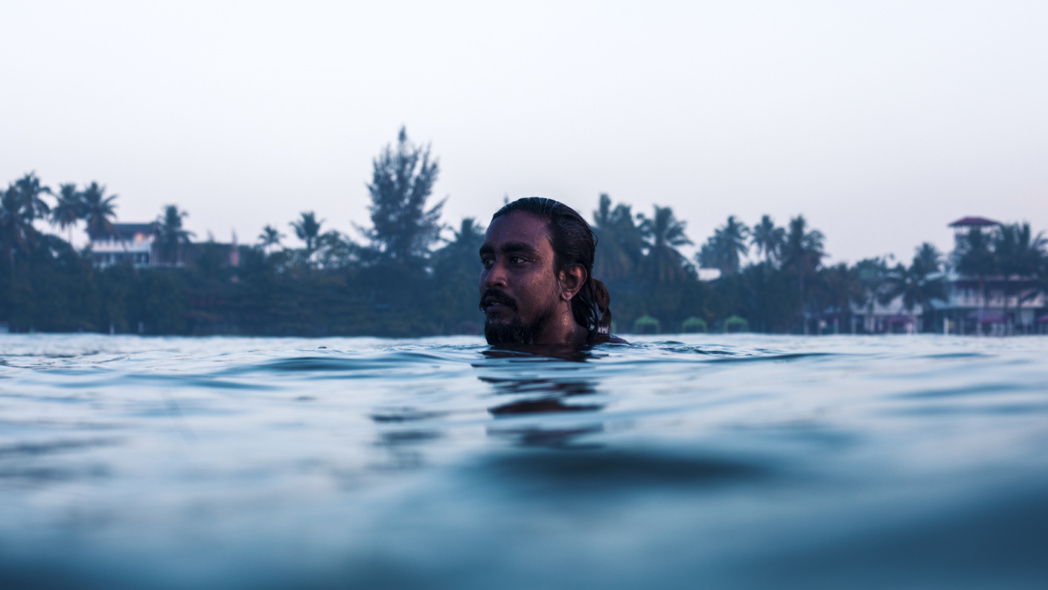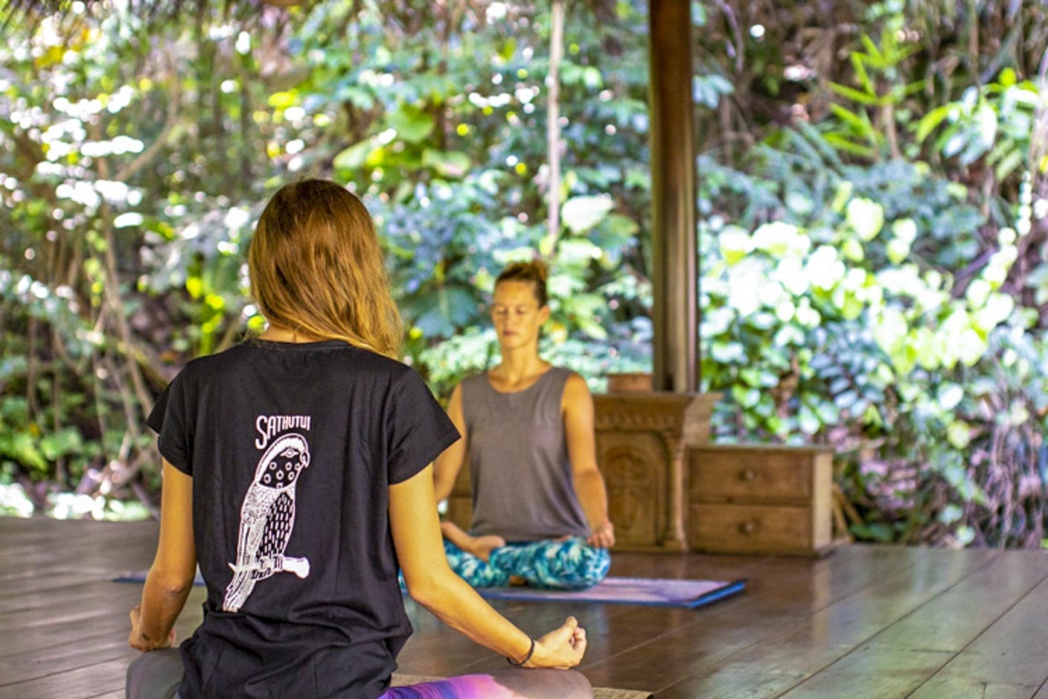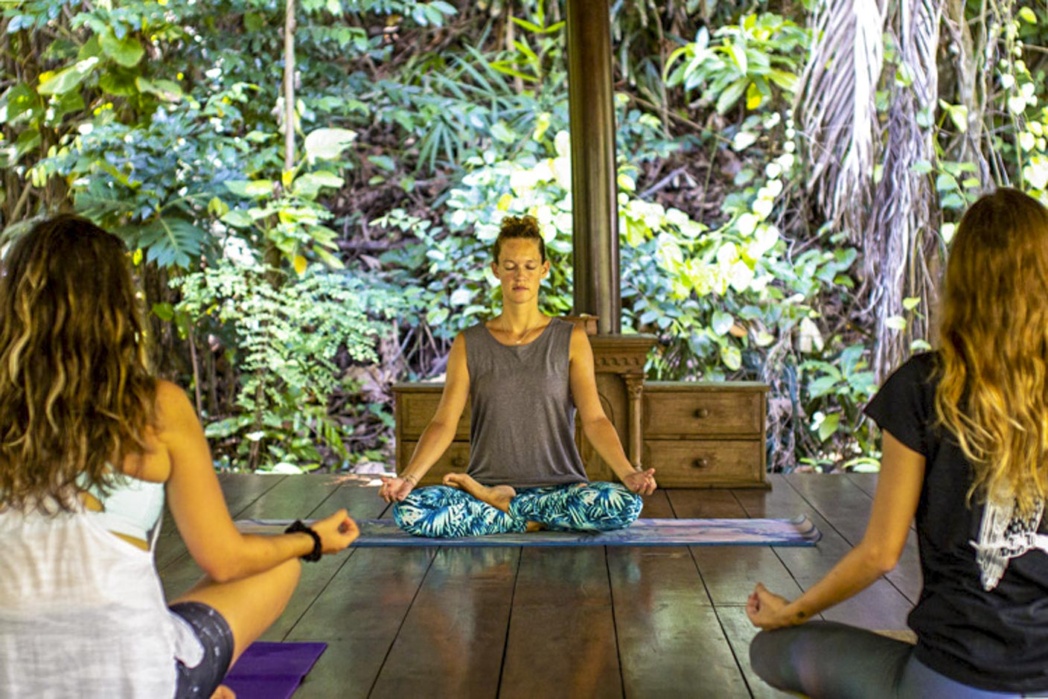
Pranayama and surfing
600.000.000 times in a lifetime
We do it all the time, about 600,000,000 times during our lives. It works simply and automatically. Carries us through our lives: breathing. Although our breathing is essential for our survival, it is rare that we give it our full attention.
Every day we take about 20,000 breaths, but we are hardly aware of them and never use the full capacity of our lungs. However, deep and conscious breathing has a positive effect on our mind, our well-being and our nervous system. Deep and conscious breathing makes us more calm and balanced. Our body is supplied with additional oxygen and can thus detoxify more quickly. In addition, our breathing also influences the frequency of our heartbeat. If we breathe quickly and shallowly, we consume significantly more energy. Deep and slow breathing, on the other hand, leads to a reduced heartbeat frequency and a significant improvement in our energy balance, and thus to more endurance when paddling, surfing and holding our breath.
Conscious breathing for more serenity
Anyone who wants to surf will inevitably be confronted with spending some time under water. Be it in case of a wipe-out or even during duck diving. Nevertheless, it is rather unlikely that we are held under water for more than 10 seconds. Nevertheless, being pushed underwater is often sudden, unexpected and involves a number of things that are difficult to assess (duration, depth, the possibility of colliding with the seabed), so this experience can be perceived as very unpleasant by some people. However, if we now learn to consciously hold our breath even when our lungs are empty, this can become a very useful skill.
As in many other sports, it is often the fear of negative consequences that keeps us from using our full potential. However, if we learn to gain some control over the things that scare us, this will help us stay calm in a wipe-out, not panic and not waste extra energy. We will be able to build more confidence and surf waves that previously seemed too big and too scary. It is interesting to know that our desire to breathe in air is not triggered by too little oxygen in our lungs, but by an excess of carbon dioxide. This means that despite the desire to breathe deeply, we are actually still sufficiently oxygenated. If we make ourselves aware of this and remember that we won’t die if we hold our breath for a minute, that’s already half the price of a relaxed surf.

Experience the expansion of life energy
So if you want to enjoy this, you should start using breathing techniques, such as pranayama. The word pranayama is derived from the Sanskrit words “prana” and “ayama”, which mean “life energy” and “expansion”. Thus, pranayama can be translated as “expansion of life energy”. The moment we decide to pay more attention to our breathing and do it in a controlled way, at least for a few minutes a day, we are already doing good to our body and mind.
Through conscious breathing, we can calm our mind, work more concentrated, reduce anxiety and increase our perceptiveness and creativity. Our breathing provides us with the easiest access to our subconscious mind and thus to changing certain behaviors as well as acting more calmly and focused – and surfing.
If we sit with our surfboard in the line-up and wait for the next big set, we are on our own there. All that’s left is our body, our breathing and our mind, which will help us surf the perfect wave. We can think of our body as the element that mirrors our past. Because of our muscle memory, our body knows what movements are necessary to surf a wave. Our mind is what makes us think about our future and perhaps makes us not consciously dwell in the present moment, making us nervous and unfocused and in the end not getting the wave. Finally, our breathing is the part that connects us to the present. It helps us focus, stay in the here and now, let thoughts of the future pull, become one with the wave. So everything is closely connected. Where we can most easily make a conscious and controlled connection to our breathing.

Pranayama is traditionally considered an element of yoga, but it can also be used alone, that is, without performing asanas. In general, it is up to each person how many minutes a day to breathe consciously. This can be between three or 30 minutes. It can be done at home, on the way to work or while sitting in the line-up waiting for the next wave. When surfing, pranayama helps us gain control over our thoughts and any fears we may have. If we get into a wipe-out or are held underwater for a long time, pranayama can help us stay calm and refrain from panicking. Try observing yourself and your breathing in stressful, anxious or exciting situations. You will notice that your breathing becomes shorter, shallower and faster. The way we breathe reflects the way we think. Conversely, our thoughts also influence our breathing. So pranayama helps us to control this better.
Below you will find some breathing techniques that you can easily do on your own. For each technique, count slowly, breathe deeply and do the exercises sitting cross-legged or on your knees if possible.
Savitri Pranayama – balance for our nervous system
In the technique of Savitri Pranayama, breathing is divided into four phases:
- Inhalation (Puraka)
- Holding the breath (Kumbhaka)
- Exhalation (Rechaka)
- Suspension of breathing (Shunyaka)
A certain ratio is assigned to the four phases (2:1), with the phases of inhalation and exhalation (puraka and rechaka) being held twice as long as the phases of holding and suspending the breath.
The sequence is as follows:
- Inhalation: count to 8 while inhaling evenly and completely.
- Holding the breath: count to 4 while holding the breath.
- Exhalation: Count to 8 and exhale evenly and completely.
- Suspending the breath: Count to 4 and do not inhale or exhale.
For the beginning you can also choose a shorter ratio, such as: 6:3:6:3 or 4:2:4:2. If you want to extend the technique at some point, this is also possible without any problems. For example, you can increase the ratio to 10:5:10:5 and so on. Just make sure that you only increase the ratio during a training session and do not decrease it. This would lead to an increased heart rate and thus to a less balanced experience.

The Wim Hof technique
Wim Hof is a Dutch extreme athlete who also gained fame as “IceMan”. He climbed Mount Kilimanjaro in two days wearing only shorts and shoes. He achieved this mainly through the breathing technique “WHM” (Wim Hof Method), which he developed and which is now also used by other athletes such as John John Florence. The main focus is on deep and even inhalation and exhalation, which Wim Hof also calls hyperventilation or “power breathing”. Corresponding inhalations and exhalations are followed by phases of holding the breath. This puts our body and mind into a brief state of stress, which, with increased practice, leads to increased resilience to that stress.
Here’s how it works:
- Find a quiet place and lie down with your back on a mat on the floor
- Take 30 to 40 deep breaths in a row
- Breathe out completely and then neither in nor out for a few seconds
- Inhale deeply and hold your breath for 10 seconds
- Repeat these steps for three to four rounds
These breathing exercises have helped me a lot in preparation for surfing. It’s best to start doing them a few weeks before your surfing vacation in Sri Lanka – or wherever you would like to go surfing next. Maybe it will help you in the same way it helped me. Just give it a try!